Designing for the future of women’s football
Four architects from BDP Pattern - Gabrielle Tester, Lindsay Johnston, Maria Besora and Achu Franceschini, discuss the phenomenal rise of women’s sport and what it means for the next generation of stadium design.




Question one:
Women’s sport has seen incredible growth over the past few years. From your perspective, what’s driving this momentum?
Gabrielle Tester: A huge factor is visibility. It’s in the media a lot more now. The England women’s football team winning two international tournaments has been massive. Football is the world’s biggest sport, so that spotlight has been a real catalyst. It’s drawn people in and made the game more accessible to everyone.
Lindsay Johnston: Exactly. Success on the international stage changes everything. It’s a catalyst for women’s sport and for society too. In some countries, female footballers are now more famous than the men – that’s incredible progress when you think the FA actually banned women’s football until the 1970s. In just 50 years, we’ve come a long way. More than half of women’s football fans only started following in the last three years, and half of the matchday crowd are women. That says a lot about how fast it’s growing and how the spaces around it need to evolve.
Gabrielle Tester: It’s definitely evolving. A lot of people started following when the Lionesses began winning, but now clubs are becoming more embedded in their communities. Fans play a huge role in shaping what happens next. Post-COVID, people are spending more on live experiences, at concerts, sport, anything social. For women’s football, that means more commercial potential, more investment, and ultimately, more growth.
Maria Besora: There’s also a wider shift towards health and wellbeing. People are more aware of fitness and sport as part of their lifestyle. Social media has helped too. Young fans can connect directly with sportswomen who’ve become visible, relatable role models. Big brands are taking note, promoting women as strong, healthy figures. That visibility encourages more participation and inspires future athletes.
Question two:
What kind of spaces do women’s football stadiums need? And what are the biggest misconceptions about designing for women’s sport?
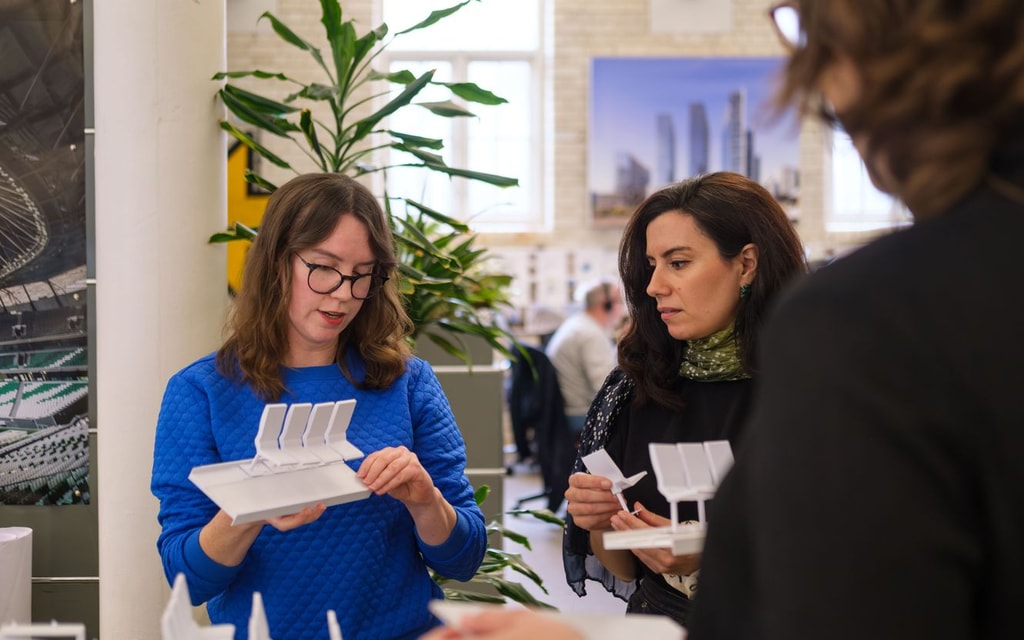
Gabrielle Tester: The biggest misconception is that a women’s stadium is just a smaller version of a men’s. It’s not. The fundamentals might be the same, but the needs are different. Female players require different facilities, and the fan demographic is unique. The design has to respond to that, not just copy what already exists.
Achu Franceschini: Exactly. Take something as basic as toilets – in men’s stadiums, there are more male facilities because that’s who the crowd is. At women’s games, there are more women and more children, so layouts, proportions and facilities all need to change. It’s simple, but it’s crucial.
Lindsay Johnston: If women’s football keeps growing at this rate, the stadiums will eventually need to be the same size as men’s. But right now, it makes sense to build more intimate venues – smaller, flexible, futureproofed spaces that can grow with the sport.
Gabrielle Tester: It’s better to have a full 20,000-seat stadium with great atmosphere than 20,000 people scattered in a half-empty 40,000-seater. The attendance levels need to be looked at, but they are not always smaller crowds. Arsenal’s a good example. The women’s team plays matches in the same city stadium as the men, it’s easy to get to, and they’re filling it. Accessibility really matters for families. Wherever possible, design should be flexible and responsive to both audiences.
Maria Besora: That flexibility is key. Shared stadiums promote equality, but purpose-built facilities for women make a powerful statement. They show that women’s sport deserves its own dedicated, world-class spaces.
Lindsay Johnston: Goodison Park in Liverpool is another great case. Everton Women will play there now. It’s central and accessible, which is brilliant. But the facilities will need big upgrades to be truly fit for purpose. It’s not about squeezing women’s teams into men’s spaces, it’s about adapting those buildings properly so they support elite female athletes.
Question three:
Women’s matches are known for a more inclusive, family atmosphere. How does that affect stadium design?
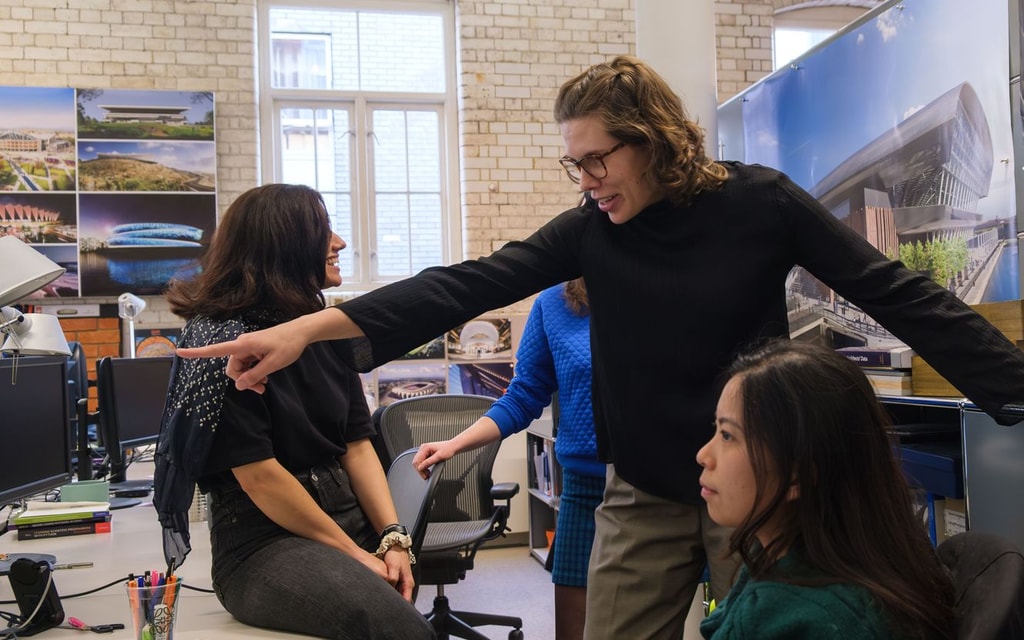
Maria Besora: Kids today live half their lives online, so digital experiences matter. Their attention spans might not stretch to 90 minutes, so we should create football-related activities elsewhere in the stadium – interactive zones, social spaces, places to play. The club experience should feel like a day out, not just a match.
Gabrielle Tester: Absolutely. We need to look at who the fans are and how they behave. Do they want different food and drink options? Maybe wine on tap instead of beer!? And as there are more kids, we need to think about how families move around. Parents with children need space and comfort. We’re still learning what works best for women’s football venues, so flexibility is everything.
Maria Besora: I played volleyball professionally, and as a kid, I loved watching matches with my family. We’d arrive hours early, make banners, meet the players. It was about community. Football has that same energy, and as designers, we need to create spaces that support it. Stadiums should help build those emotional connections.
Lindsay Johnston: I agree. If kids can see their heroes up close, it inspires them. At big stadiums we already have ‘Tunnel Club’ experiences, but they’re often expensive. Why not make that kind of access more inclusive?
Maria Besora: We could use technology to make it happen – interactive zones, social media booths, or live Q&As so fans can engage with players on matchday.
Achu Franceschini: And we shouldn’t forget play areas or family zones. If matches become a full-day experience, people need spaces to relax, for kids to play, maybe even mini football pitches around the grounds? It’s all part of making it more welcoming.
Question four:
How can innovation in materials and data help women’s sports leapfrog traditional approaches?
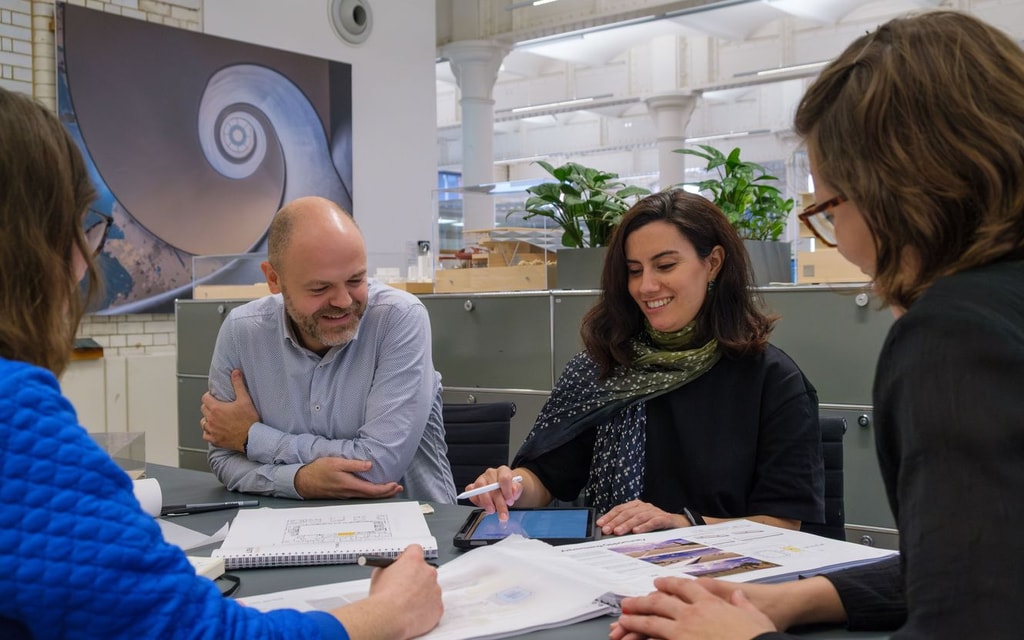
Achu Franceschini: Sustainability is fundamental. Every new stadium should consider its carbon footprint, materials and energy performance. But biophilic design can also improve athlete wellbeing. Things like better air quality or natural light can reduce stress and enhance performance. Sports buildings are complex, but data helps us make them smarter – reducing cost, risk and energy use. And we can learn from data-rich sports science too. Athletes now train with real-time monitoring, so we can design spaces that directly support their physical and mental health.
Lindsay Johnston: There’s huge potential to reduce injuries too. Women are more prone to ACL injuries, often because they’re wearing kit or using rehab systems designed for men. As investment grows, so does the research, and that will feed back into how we design training and medical facilities.
Gabrielle Tester: The women’s game was banned for 50 years, so it’s still catching up in terms of research and innovation. But with more visibility and funding, the data we collect now can drive design decisions, from player performance to how fans experience the space.
Achu Franceschini: And as designers, we’re using that data across projects – crowd modelling, sightlines, accessibility, even seating design. Regulations are often based on men’s dimensions, but women and children are typically smaller. Maybe in future we’ll see adjustable seating or family benches. It’s about making every space more inclusive.
Question five:
What cultural differences do you think about when designing for women’s sport around the world?
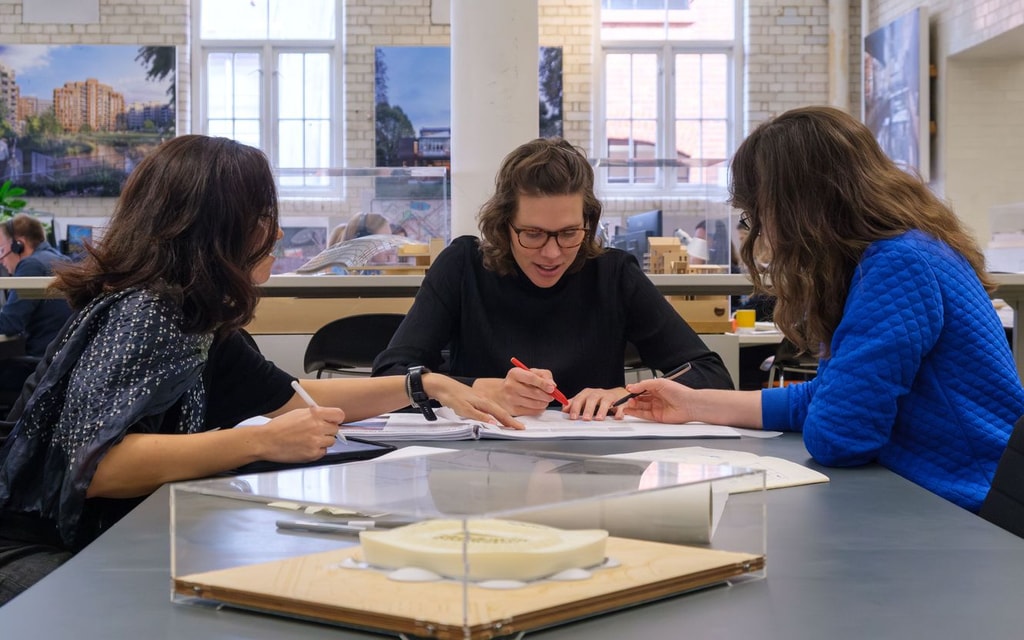
Lindsay Johnston: There’s a strong parallel with being women in architecture. We’re working in what has traditionally been a male-dominated space and showing that talent and leadership can change the game. Our team is quite unique: we’re gender balanced and come from all over the world. Gabrielle’s Australian, Maria’s Spanish, Achu’s Argentinian, and I’m Scottish. That diversity gives us a global perspective and helps us design for everyone.
Gabrielle Tester: We’re also more connected than ever. Social media allows people to follow their favourite players anywhere in the world. There’s something called the ‘Scully Effect’. When The X-Files aired, so many girls went into STEM fields because of a strong female role model in Agent Scully. We’re seeing that same thing now in women’s football - it’s breaking down cultural barriers everywhere.
Question six:
Do you think being women shapes the way you design for women’s football?
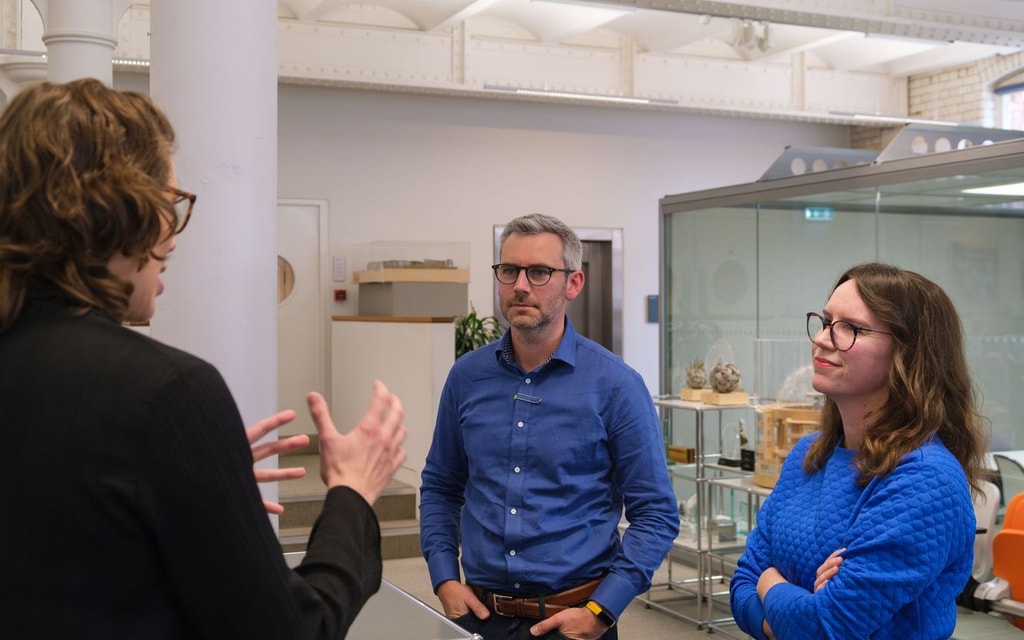
Achu Franceschini: Definitely. In Argentina, football is massive, but sometimes the stadium experience can feel intimidating for women. I understand that first-hand. It makes me think about design that feels safe, inclusive and welcoming – and I can help my male colleagues see that through a different lens.
Gabrielle Tester: At BDP Pattern, we’ve got such an open, collaborative culture and everyone’s voice is valued. That makes our designs stronger. Ultimately, we want venues that work for everyone, not just on matchday but all year round. Spaces that offer community, family and flexibility.
Lindsay Johnston: Stadiums are expensive assets, but they’re also cultural landmarks. They should feel alive, open to the community, full of energy and have a purpose beyond football.
Question seven:
So what does good design for women’s football look like in ten years’ time?
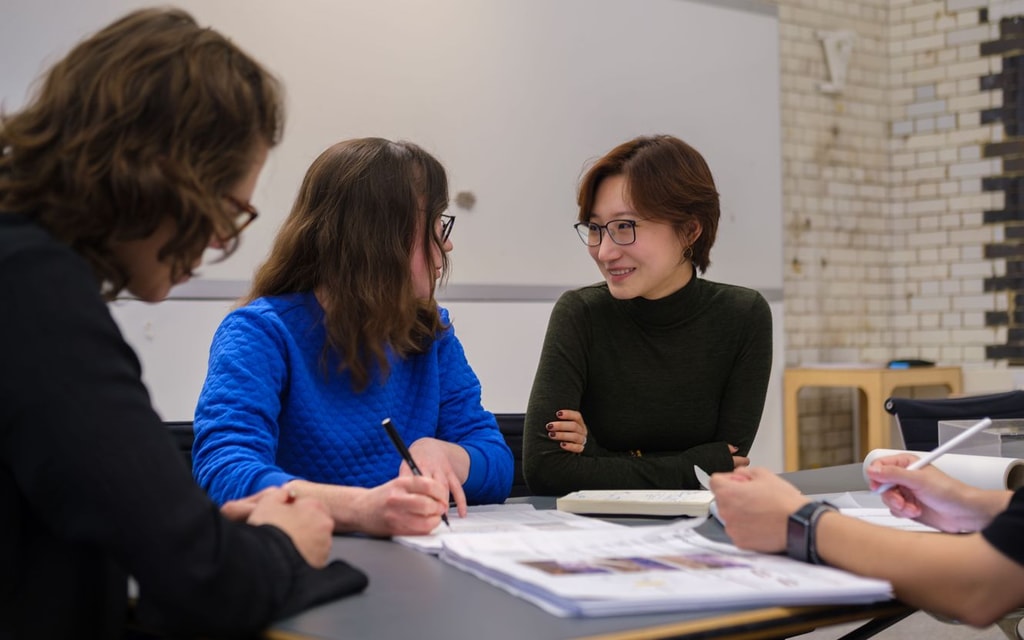
Maria Besora: If growth continues the way it has, we’ll soon be designing women’s stadiums for sold-out crowds. Perhaps crowds that outsell the men’s game. That’s the goal - to reach the point where equality isn’t aspirational, it’s just normal.
Lindsay Johnston: Precisely. Look at tennis – equal prize money, equal crowds, shared venues. That’s the benchmark. Football should be there too. It’s the world’s biggest sport, and women deserve an equal stage.